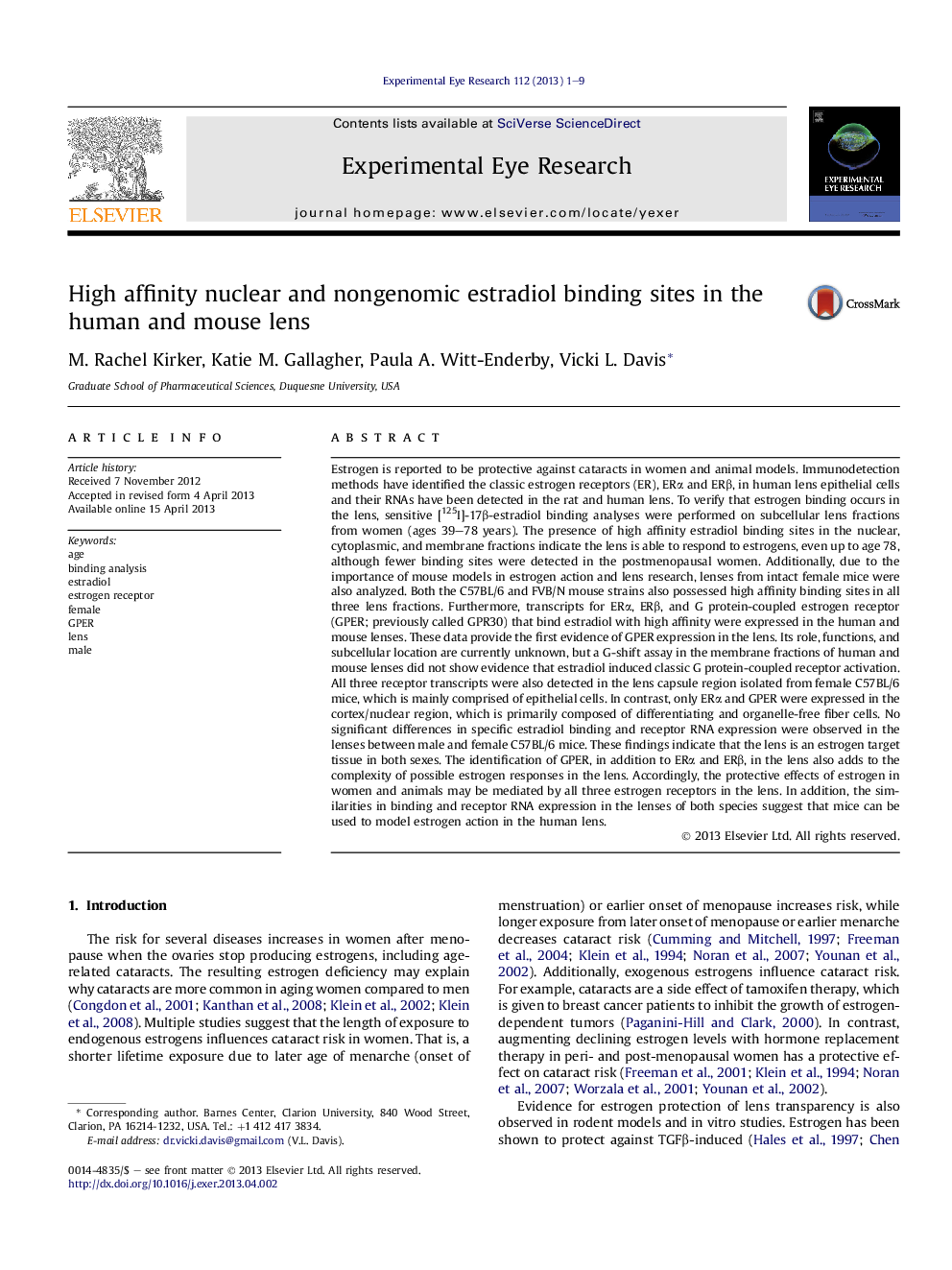| کد مقاله | کد نشریه | سال انتشار | مقاله انگلیسی | نسخه تمام متن |
|---|---|---|---|---|
| 4011189 | 1602610 | 2013 | 9 صفحه PDF | دانلود رایگان |

• High affinity estradiol binding sites were detected in the lens from women and mice.
• Estrogen binding sites are present in nuclear, cytosol, and membrane lens fractions.
• Lenses of postmenopausal women remain estrogen responsive, but fewer sites exist.
• ERα, ERβ, and GPER transcripts were expressed in human and mouse lenses.
• Binding and receptor RNA levels were similar in male and female mouse lenses.
Estrogen is reported to be protective against cataracts in women and animal models. Immunodetection methods have identified the classic estrogen receptors (ER), ERα and ERβ, in human lens epithelial cells and their RNAs have been detected in the rat and human lens. To verify that estrogen binding occurs in the lens, sensitive [125I]-17β-estradiol binding analyses were performed on subcellular lens fractions from women (ages 39–78 years). The presence of high affinity estradiol binding sites in the nuclear, cytoplasmic, and membrane fractions indicate the lens is able to respond to estrogens, even up to age 78, although fewer binding sites were detected in the postmenopausal women. Additionally, due to the importance of mouse models in estrogen action and lens research, lenses from intact female mice were also analyzed. Both the C57BL/6 and FVB/N mouse strains also possessed high affinity binding sites in all three lens fractions. Furthermore, transcripts for ERα, ERβ, and G protein-coupled estrogen receptor (GPER; previously called GPR30) that bind estradiol with high affinity were expressed in the human and mouse lenses. These data provide the first evidence of GPER expression in the lens. Its role, functions, and subcellular location are currently unknown, but a G-shift assay in the membrane fractions of human and mouse lenses did not show evidence that estradiol induced classic G protein-coupled receptor activation. All three receptor transcripts were also detected in the lens capsule region isolated from female C57BL/6 mice, which is mainly comprised of epithelial cells. In contrast, only ERα and GPER were expressed in the cortex/nuclear region, which is primarily composed of differentiating and organelle-free fiber cells. No significant differences in specific estradiol binding and receptor RNA expression were observed in the lenses between male and female C57BL/6 mice. These findings indicate that the lens is an estrogen target tissue in both sexes. The identification of GPER, in addition to ERα and ERβ, in the lens also adds to the complexity of possible estrogen responses in the lens. Accordingly, the protective effects of estrogen in women and animals may be mediated by all three estrogen receptors in the lens. In addition, the similarities in binding and receptor RNA expression in the lenses of both species suggest that mice can be used to model estrogen action in the human lens.
Journal: Experimental Eye Research - Volume 112, July 2013, Pages 1–9